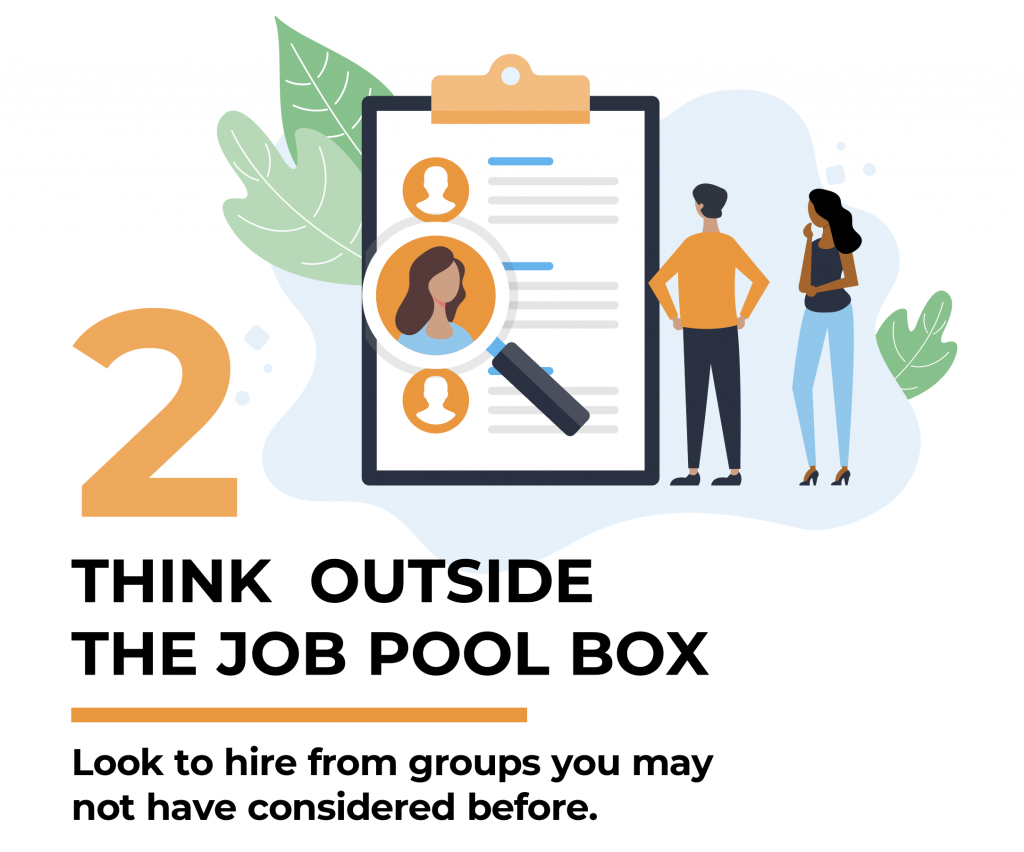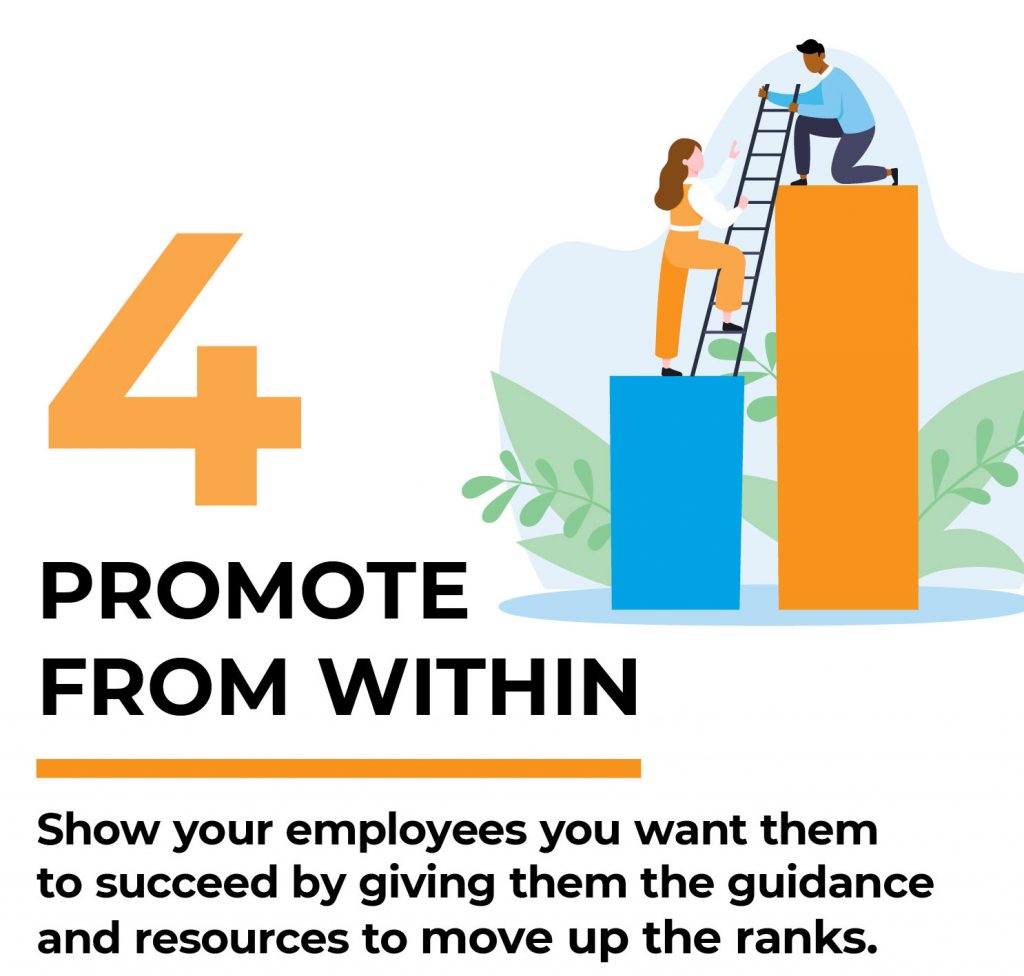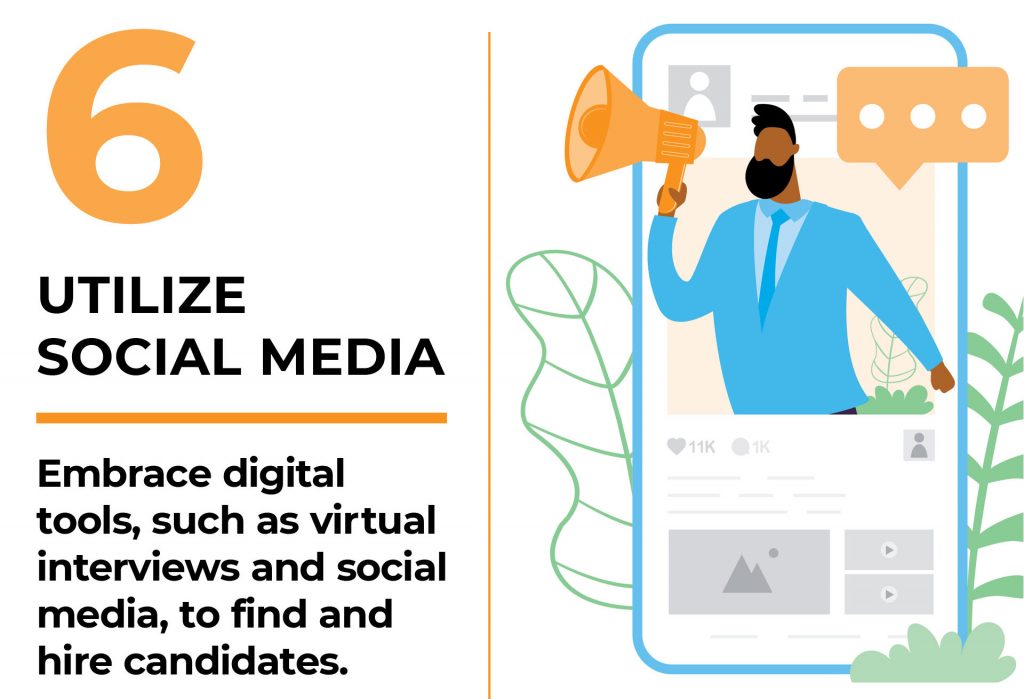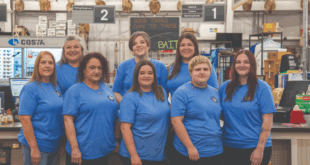Help Wanted. Now Hiring. These signs have become part of the landscape at many businesses across the country as companies struggle to fill open positions. The obstacles go beyond finding quality employees; many businesses are having a difficult time just finding people to fill job openings.
One data point the U.S. Bureau of Labor Statistics gathers is number of unemployed persons per job opening. When that number is above one, there are more unemployed persons than there are jobs available. Since June 2021, that number has been below one, indicating there are more job openings than unemployed persons to fill those spots. As of the end of 2021, there were 10.6 million available jobs but only 6.9 million unemployed persons to fill those spots.
Finding workers to fill open roles has become one of the biggest hurdles for employers, and the home improvement industry is not immune. In late 2021, the North American Hardware and Paint Association (NHPA) conducted an informal survey and found that 60 percent of respondents indicated having trouble finding workers to fill open slots.
Hardware Retailing spoke to several retailers who shared their insights on the hiring strategies they use to find and hire new employees and the ways they have navigated the recent hiring and labor shortage issues. Whether you are feeling the effects of the labor shortage or have been able to consistently find good help, these best practices are helpful for recruiting and retaining quality workers in any labor market.
 If the pandemic taught us anything, it was the importance of flexibility and being able to adapt to constantly changing environments. The staff at Hagan Ace Hardware discovered that being adaptable was one hiring strategy that has helped find workers to fill open job positions.
If the pandemic taught us anything, it was the importance of flexibility and being able to adapt to constantly changing environments. The staff at Hagan Ace Hardware discovered that being adaptable was one hiring strategy that has helped find workers to fill open job positions.
Hagan Ace’s director of human resources LaDonna Silcox says that the pandemic changed the way the company hires and onboards employees. Prior to the pandemic, when Hagan Ace would hire a new employee, that employee’s first day took place on one of the biweekly New Employee Orientation (NEO) meeting days.
“In the past few months, we found that we were losing workers before they even started. We would hire someone but they would change their mind or decide to go another route between the time we hired them and their first day of NEO. So, we changed our policies,” Silcox says. “Managers now have an employee start on any day and come to the next available NEO day for that training after they start. An employee doesn’t necessarily have to start on an NEO day.”
For Factory Paint & Decorating, which has locations in Pembroke and Plymouth, Massachusetts, being flexible means responding immediately to any job applicants rather than waiting.
“We’ve been lucky to have retained most of our employees, but with the few hires we have made this year, our new strategy has been to respond instantly to the application rather than take a few days to review,” says marketing director Kristen van Dyk. “When the candidate seems like a good fit, we request an interview via text and email to cover both avenues of communication.”
The company also posts open job positions more often, and has tried posting in different places online.
“We typically advertise our open positions on Indeed, Facebook and our company website, but I have also added our job openings to Linkedin and ZipRecruiter,” van Dyk says.
 Another way companies are filling open positions is by looking beyond their normal pool of job candidates. Deniece Maston, a knowledge adviser with the Society for Human Resource Management (SHRM), says she has heard from numerous SHRM members who are getting creative and tapping into resources they may not have used before.
Another way companies are filling open positions is by looking beyond their normal pool of job candidates. Deniece Maston, a knowledge adviser with the Society for Human Resource Management (SHRM), says she has heard from numerous SHRM members who are getting creative and tapping into resources they may not have used before.
“These members are looking at job candidates with criminal backgrounds and from tech schools and tapping into groups they may not have even looked at before,” she says. “A big push in some industries has been looking at mature candidates and retirees, while I’ve heard from others who are posting on job boards they have never considered before and partnering with organizations in their communities that help people find work.”
Maston says the Equal Employment Opportunity Commission (EEOC) discourages employers from having blanket policies that deny employment to any person with a criminal history. Rather, the EEOC advises employers to conduct individualized assessments to determine a candidate’s employment suitability.
“I hear from members that generally employees with criminal records are no more likely to be fired for misconduct than people without records,” she says. “Also, they are statistically less likely to resign, which saves employers in turnover costs.”
SHRM also notes that all 50 states offer insurance bonds to employers who hire risky populations through the Federal Bonding Program under the Department of Labor. Employers may also be eligible for tax credits or other incentives from their state.
Factory Paint & Decorating also expanded its candidate pool by widening the mile search radius on the job sites where van Dyk posts open positions. Widening the search net allows the company to reach more people within the stores’ different zip codes.
 Whether the store has job openings or not, once a month, the management team at HomCo Lumber & Hardware in Flagstaff, Arizona, gathers in the store’s conference room for a group interview, says chief operating officer Todd Callan.
Whether the store has job openings or not, once a month, the management team at HomCo Lumber & Hardware in Flagstaff, Arizona, gathers in the store’s conference room for a group interview, says chief operating officer Todd Callan.
“People don’t believe us when we say we don’t have a labor problem. Businesses say there are no good people out there to hire, but they are there, they just may not be available when you need them,” Callan says. “That’s the philosophy behind having these monthly interviews—we hire good people when they are available and find spots for them in our company.”
Callan hosts the monthly interviews, and the store manager Christy Engle and chief financial officer Dan Groth help facilitate. Other members of the HomCo staff also participate in the group interviews; for example, if there is a job candidate who would be a good fit for the lumberyard, Callan will bring a lumberyard employee to be a part of that group interview.
“We like to bring in a mix of staff because they are the ones the job candidates will actually be working with,” he says.
Having one set time each month for interviews saves time and energy. Callan says they normally can finish the group interviews for five people in an hour, which saves hours over meeting with each of those candidates individually.
“The process works. It’s fun and has really helped us bring on some great employees,” Callan says.

 When looking to fill management or other associate roles, recognize the excellent employees you already have on staff and focus on promoting from within your company.
When looking to fill management or other associate roles, recognize the excellent employees you already have on staff and focus on promoting from within your company.
Silcox says that the management team at Hagan Ace Hardware strives to promote from within whenever they can to reward those employees who want to move up. The company tasks store managers with meeting with their employees regularly to learn their goals and how they see themselves advancing in the company.
Joan Saunders, the manager at the Hagan Ace Green Cove Springs store, has been with the company for 47 years. She meets with her employees once a quarter for a review of their job performance, but also to talk about each employee’s goals with the company and how she and the other management team members can help them achieve those goals.
If Saunders hears from employees who want to advance to other job positions or sees potential in an employee to move up in the company, she has those employees shadow herself or other management team members.
“When I make decisions, I’ll include those employees in the process, showing them different ways I would handle issues,” Saunders says. “Having them shadow and learn from me and other managers is especially helpful when things happen on the floor because they can see work in action and the steps we take to get everyone on the same page and working together.”
Saunders also sets an example for her employees on the skills, attitude and dedication it takes to be promoted and be successful in the company.
“I’m on the floor about half the time I’m here because I want them to see me out there working with them, and see that being a manager includes helping out wherever you’re needed,” she says. “I also have an open-door policy, that if there’s an issue at work, or even at home, I want to be there for my employees. I’ve found through the years that the more you’re involved in your employees’ lives the better employees they’re going to be.”

Rather than hiring for a specific job opening, companies should consider hiring for its culture, looking for workers who fit in well with the team and who can be trained to do well in a certain role. Your company’s culture can also be a major selling point in attracting quality employees. The PricewaterhouseCoopers 2019 Future of Recruiting Survey found that the top influences for accepting a job offer were overall compensation at 38 percent, company location at 34 percent and company values and culture at 29 percent.
Saunders says it’s the family atmosphere at Hagan Ace Hardware that draws employees in and motivates them to stay. Employees also appreciate the company’s culture of giving back to the community and local organizations.
Hagan Ace Hardware donates money, products and time to local charities, and in 2021, it donated over $110,000 to local causes and organizations.
“Several times a year, we’ll host a weeklong event where customers can round up their purchases and all the money raised goes to a local food pantry or other charitable organizations,” Saunders says. “Usually the Hagan family will match whatever we collect at the store level, making our contributions go even farther. They set an excellent example for what it truly means to be part of a community and a giving culture.”
At HomCo Lumber & Hardware, an employee must be a good fit for the company’s culture above all else. Callan says the company competes with large employers in the area, so it needs to set itself apart with a culture that welcomes and allows for growth. The company’s careers page on its website shares its vision and mission, and those facets of the company’s mission and focus are even painted on the walls in the group interview room for potential employees to see.
“Most people don’t realize that working in hardware can be a career and not just a job,” Callan says. “Our culture focuses on helping our employees grow while serving our customers.”
 Jobvite, an applicant tracking software and recruiting platform, surveyed 1,500 working adults in the U.S. at the start of 2021. The 2021 Job Seeker Nation Report found that 44 percent used social media sites to search for jobs.
Jobvite, an applicant tracking software and recruiting platform, surveyed 1,500 working adults in the U.S. at the start of 2021. The 2021 Job Seeker Nation Report found that 44 percent used social media sites to search for jobs.
Along the same vein, some companies, like Bennett’s Paint in North Logan, Utah, have turned to social media as part of their hiring strategies. Co-owner Ben Jenkins says the store posted a job opening on Facebook for the first time in 2017 and has used the medium several times since then for job openings.
“We use social media as part of a larger hiring strategy, which includes posting on our website, our marquee sign, online job search websites, local job services and putting signs up in the store,” he says. “Logan has one of the lowest unemployment rates in the nation, and every store you walk into has a ‘Now Hiring’ sign, so social media has been one more way to reach potential candidates.”
Maston from SHRM predicts that technology and the digital world will continue to trend into the future. She has heard from SHRM members who are specifically looking for resources about virtual resumes and interviewing.
“Even before the pandemic, employers had been relying on and turning to interviews via virtual outlets,” Maston says. “Looking toward the future, I would not be surprised to see more employers and employees embracing technology during the hiring process. Instead of sending a cover letter, a job applicant might send a link to a TikTok video explaining why they want that job and why they would be a good candidate.”
 Hardware Retailing The Industry's Source for Insights and Information
Hardware Retailing The Industry's Source for Insights and Information






